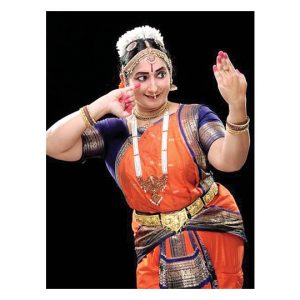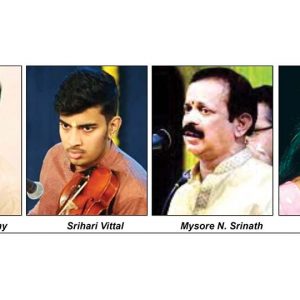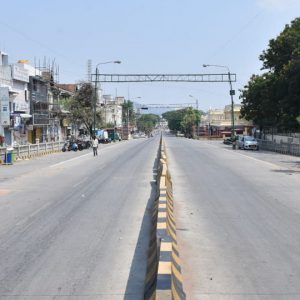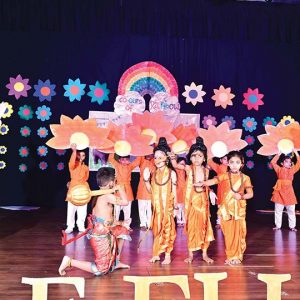By Prof. A.V. Narasimha Murthy, former Head, Department of Ancient History & Archaeology, University of Mysore
Most people from Karnataka and some from Andhra and Tamil Nadu might have visited Udupi, the home of Sri Krishna temple established by Sri Madhwacharya, the propounder of Dwaita (dualism) philosophy. It is not our intention here to explain the various concepts connected with this philosophy. The other two schools of thought are Adwaita (non-dualism) propounded by Adiguru Shankaracharya of Sringeri and Vishistadwaita (the qualified monism) propounded by Sri Ramanujacharya. Thus these three schools of Vedantic thought are contributions from South India, emerged on the basis of same Vedic thought but are matters of interpretation.
Under this background the history of Udupi and its various temples and religious practices may be examined. Every holy place or a Srikshetra has a mythological origin. Thus the word Udupi has been derived from udu + pa meaning Lord of Moon or Chandra. He is referred to as Udupa because he is the Lord of Udu or Nakshatra (stars).
According to mythology, Chandra became the target of a curse from Daksha Prajapathi for some reason. He thought of getting himself cured from this curse and naturally he performed penance to Shiva Mahadeva. This penance was performed at this place then known as Abja forest (Abjaranya). Shiva was pleased by the hard and dedicated penance of moon and granted him his wishes and the place where moon performed his penance became famous and a temple for Chandramouleeswara was built. By the side of it is a holy pond called Chandra Pushkarini and a dip in it is considered holy and the devotee gets the religious merit (punya). Thus devotees show eagerness to take a dip in this holy pond. Those who cannot do it sprinkle the holy water on their head. Some priests also do it.
Another important temple at Udupi is the Anantheswara temple. It is a unique temple built in apsidal fashion which means that the backside of the temple is in the form of an elephant’s back. Such temples are rare in our country. It is one of the ancient temples in coastal Karnataka. Built in about ninth century AD, it is a two-storeyed building. Because of incessant rains, the roof has been made into a slope so that rain water goes down without damaging the structure. Added to it, copper sheets have been pressed to the roof. The usual parts of the sanctum and others are built of stone. It has a sanctum, mandapas and also a circumambulatory passage.
However, the most important temple in Udupi is Krishna temple, also called as Sri Krishnamatha. Around 1270-80, Sri Madhwacharya established the Sri Krishna temple at Udupi and it became famous from then onwards. But there are many evidences to prove that this place was a holy centre from the earlier times. It is believed that Hastamalaka came here and established the Anantheswara temple. It also has some Jaina connections. Though Krishna temple is slightly small it is a well-built structure.
After entering through the main door, one can see Madhwa pond (pushkarini). In the hind garbagriha is found the sculpture of Lord Sri Krishna which is idol of worship in Sri Krishna temple at Udupi. It is not a very tall sculpture but is highly majestic and giving assurance to the devotees. He has a tall churning rod (Kadagolu) in his right hand and many saints of Dasapantha have composed many songs which are sublime in nature. There is no entrance door at the opposite of the Lord Krishna. But a small square hole has been provided to view Lord Krishna and people stand in the queue and normally have about some seconds to view the lord and the temple staff would be regularly monitoring the crowd.
At this stage, it is necessary to acquaint ourselves with the famous Kanakanakindi (opening) through which Saint Kanakadasa had darshan of Lord Krishna. He lived during 1509-1607 AD. As he was not a brahmana and as per the practice of those days, he was not allowed to see Lord Krishna. Lord Krishna turned around from his peetha and gave darshan to Kanakadasa. There is a small opening which is referred to as Kanakanakindi. Kanakadasa was a social reformer and composed many songs. It requires a separate write-up for Saint Kanakadasa.
One of the most unique features of Sri Krishnamatha at Udupi is the arrangement called Paryaya. Saint Madhwacharya had made arrangements among the eight Mathas (Ashtamathas) that each Swamiji would perform the worship of Lord Krishna for two months. During the time of Sri Vadiraja, it was felt that it should be two years as two-month period is too short for taking up any developmental work. Hence it was unanimously felt by the Swamijis of all these Mathas that a two-year period would be most suitable and it was decided so. One Swamiji would have the opportunity of worshipping Lord Krishna for two years at the end of which he will transfer it to the next Swamiji without any hitch and hindrance and it has worked well so far and it is bound to continue forever, as long as Lord Krishna exists there. This system is called Paryaya. This is something like rotation of the worship of Lord Sri Krishna. Hence Udupi Paryaya is a great celebration in Karnataka and many dignitaries throng the temple of Lord Krishna and consider it as their punya to witness this paryaya. All lodges, chatras and even individual houses would be full. Really that is a great spectacle.
I had the good fortune of being at Udupi on one paryaya festival sometime back as a VIP. On that occasion I had the good fortune of taking part in the Chaukioota which was blessed by the Swamijis. This lunch was fabulous because it had over fifty items including sweets. After lunch the Swamijis bless the devotees in general and VIP devotees were ushered into a chamber where the Paryaya Swamiji blessed us with a shawl and a wooden kadagolu. This has the carving of Lord Sri Krishna holding a tall danda and the entire piece is in the form of a kadagolu and it adorns the showcase in my residence. It has a label which reads: Sri Krishna prasadam, Paryaya Sri Puthige Sri Krishnamatha, Udupi and has the portraits of Sri Madhwacharya and Puthige Matha Swamiji. It is a collector’s piece and I proudly show it to my friends and relatives.
Another sacred place in Udupi is Ambalapadi. Practically it is an extension of Udupi but it has its own unique place. It is famous for Janardana and Mahakali temples and devotees visit it in the evening for special worship. Devotees come and place their requests at the feet of the God here and get suitable answers for their questions and doubts by the main priest. This is usually done on Fridays. Huge crowd of devotees assemble here to witness this spectacle. I and my wife had the good fortune of witnessing this divine scene some time ago.
Finally I should express my gratitude to Professor Sripathi Thantri, who formed a Trust. He is the Chairman of the Trust and has taken upon himself the responsibility of perpetuating the memory of late Padur Gururaja Bhat, who was my friend and Principal of Kallianpur College.
This year the Padur Gururaj Bhat Award was given to me by Central Minister D.V. Sadananda Gowda in which Dr. M. Govinda Rao (former Economic Advisor to the PM and Member of the Finance Commission) presided. Dr. K. Sudha Rao (former VC of KSOU and former Secretary of Karnataka State Knowledge Commission), Prof. R. S. Deshpande, (former Director, ISEC, Bengaluru) were the chief guests. Members of the family of Padur Gururaj Bhat graced the occasion. I have received many awards like Kannada Rajyotsava, Puratatva Ratna, K. M. Munshi, Thathaiah etc., but this one will be nearer to my heart because of the academic work done by Gururaj Bhat, whose memory will remain with me for long.








ONE COMMENT ON THIS POST To “Udupi, the Kshetra of Lord Sri Krishna”